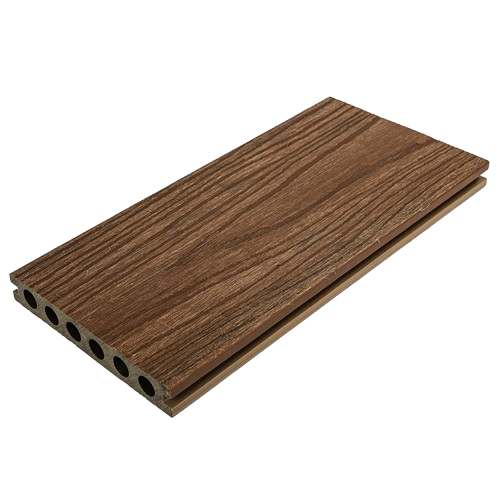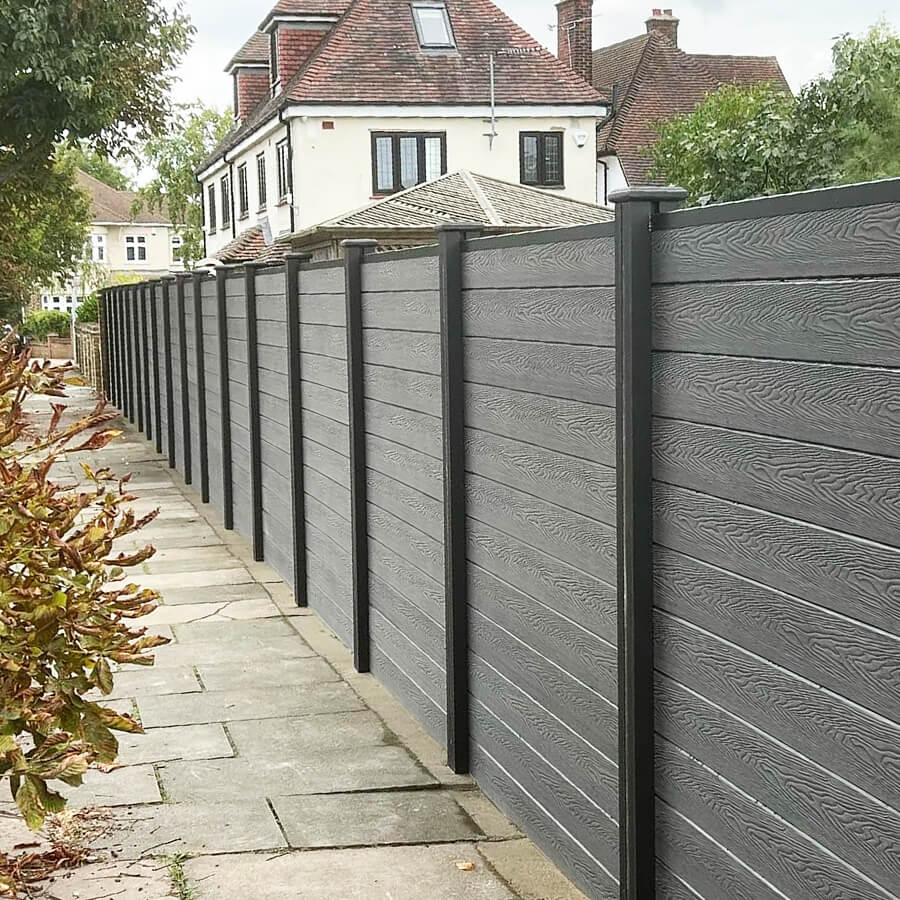
Top 10 WPC Decking Manufacturers in China
July 28, 2023Everything You Should Know About Embossed Composite Decking
August 12, 2023
Composite Fencing UK: Sustainable Solutions for Modern Boundaries
Understanding Composite Fencing Technology
Modern composite fencing represents a technological leap in boundary solutions, combining recycled wood fibres (60-70%) with polymer materials (30-40%) to create durable, maintenance-free structures. Unlike traditional timber fencing that requires annual treatments, composite materials undergo advanced co-extrusion processes to achieve UV-stable colouration and moisture-resistant properties.
Material Composition Breakdown
- Recycled hardwood fibres: 65% average composition
- High-density polyethylene (HDPE): 32%
- Binding agents & UV stabilisers: 3%
Strategic Applications Across UK Sectors
Urban Residential Solutions
Contemporary composite fencing panels have become the first choice for UK homeowners, with 68% of new garden installations opting for composite materials according to 2023 landscaping surveys. Key residential implementations include:
- 2.4m privacy screens for townhouse developments
- Decorative picket systems for conservation areas
- Pool safety barriers meeting BS EN 13451 standards
Commercial Infrastructure
Leading UK business parks increasingly specify composite fencing solutions for their 25+ year lifecycle benefits. Notable projects include:
- Perimeter security for data centres
- Acoustic barriers along A-road developments
- Hygienic boundary systems for food production facilities
Performance Advantages Over Traditional Materials
| Feature | Composite | Timber | Metal |
|---|---|---|---|
| Lifespan | 25+ years | 8-12 years | 15-20 years |
| Maintenance Cycle | Annual wash | Biannual treatment | 5-year repainting |
| Carbon Footprint | 1.8t CO2e | 2.4t CO2e | 3.1t CO2e |
Technical Selection Criteria
Load-Bearing Capacity
Premium composite fencing systems from industry leaders achieve wind load ratings of 0.65 kN/m², suitable for exposed coastal locations. Always verify:
- BS 6399 wind load compliance
- Fixing system corrosion ratings
- Substrate compatibility with ground conditions
Aesthetic Considerations
Modern manufacturing techniques enable realistic woodgrain textures across 12 standard RAL colours. Recent market analysis shows:
- 43% choose graphite grey for contemporary schemes
- 31% select oak-effect finishes
- 26% opt for custom colour matches
Installation Best Practices
Foundation Requirements
Professional installers recommend:
- 600mm deep concrete footings for standard panels
- 750mm depth in clay soil areas
- 50mm gravel base for drainage optimization
Expansion Management
Composite materials exhibit 0.05% linear expansion per 10°C temperature change. Best practice includes:
- 5mm gap between panel ends
- Slotted fixing holes
- UV-stabilised jointing strips
Environmental Compliance
UK composite fencing manufacturers must adhere to multiple environmental standards:
- ISO 14001 environmental management
- EN 13556 wood recycling protocols
- REACH chemical safety compliance
Leading suppliers like industry innovators now achieve 93% closed-loop material recycling in production processes.
Cost-Benefit Analysis
While composite fencing carries 35-40% higher initial costs than pressure-treated timber, lifecycle costing reveals:
- 62% lower maintenance costs over 15 years
- 91% reduced replacement likelihood
- 28% property value enhancement (RICS 2022 data)

